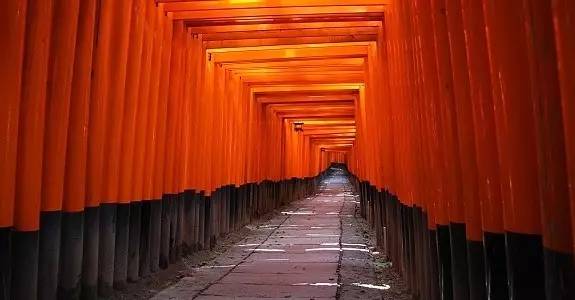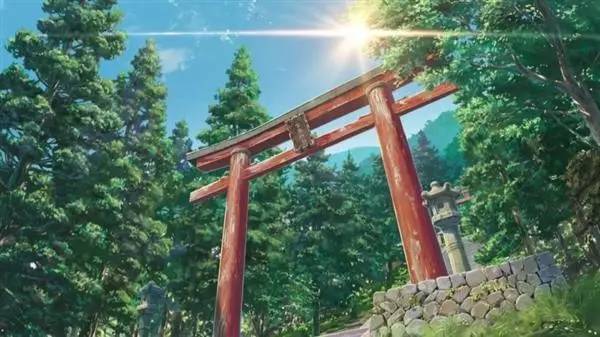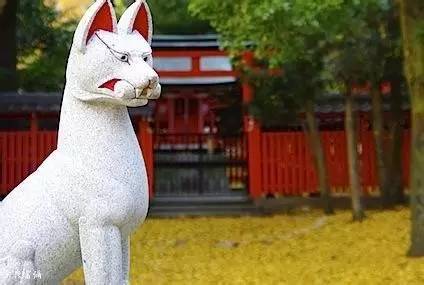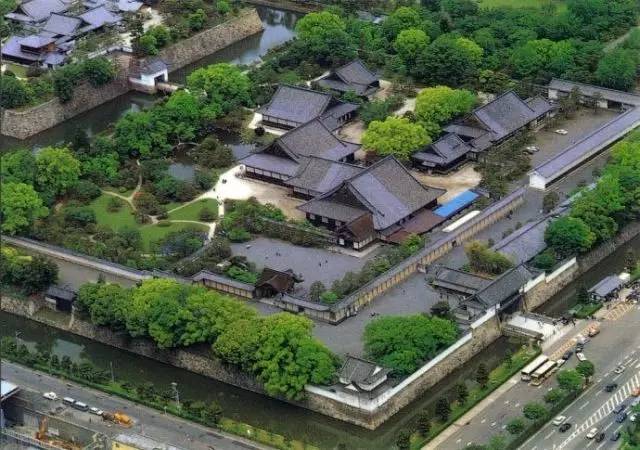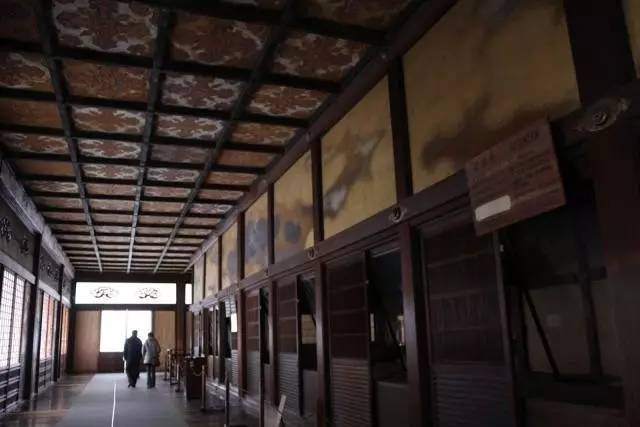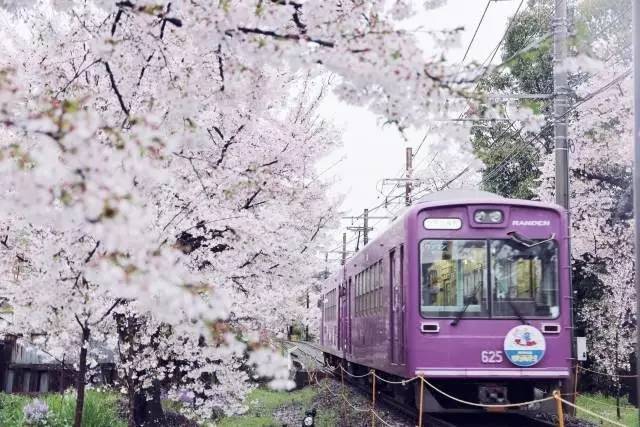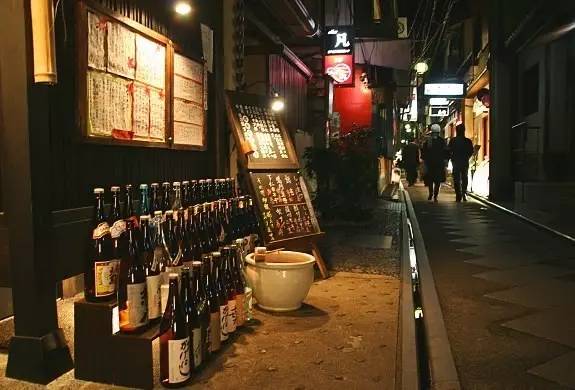前几期我们看过了欧美,这一期来亚洲游一游吧~
今天要给大家介绍的城市是京都。
注意,京都Kyoto不是东京Tokyo,虽然这两个城市英文字母都一样,只是排列不一样。
不过这可是两个不一样的城市,一个是百年前的古都,一个是现在的日本首都。
今天我们就带大家来欣赏一下这个古都吧。
Kyoto (京都, Kyōto) served as Japan's capital and the emperor's residence from 794 until 1868. It is now the country's seventh largest city with a population of 1.4 million people and a modern face.
Served as:作为,serve表示“服务”,但是其用法却非常广泛,不可狭隘地理解为仅仅是服务业的服务。
Residence:住宅,居所。
With a population of:有……人口。我们在昨天的推文中给大家介绍过,在正式写作中经常用介宾短语替代动词。这里也是,With a population of优于have……population。
Face:脸,同样,face也不可狭隘理解为人或动物的脸,也可抽象表示“面貌”。
京都是公元794-1868年的日本首都和天皇居住地。现在,它已经变成了日本的第7大城市,拥有140万人口和现代化面貌。
Over the centuries, Kyoto was destroyed by many wars and fires, but due to its historic value, the city was dropped from the list of target cities for the atomic bomb and spared from air raids during World War II. Countless temples, shrines and other historically priceless structures survive in the city today
Over the centuries:千百年来,在漫长的岁月中。大家记住这个表达,可以用在自己的写作中。
historic value:历史价值。
be dropped from the list of:从……名单中被划去,被除名,被不予考虑;常用短语,可用范围很广。
atomic bomb:原子弹。
be spared from:spare表示闲置,宽恕;be spared from= be dropped from the list of,不过be spared from通常表示“被宽恕”,而“be dropped from the list of”多表示“被除名”。
Countless:count数,countless数不尽的。
Shrines:神社。
在漫长的岁月中,京都曾饱受战乱硝烟,但是由于其历史价值,这座城市有幸逃过了二战中的原子弹投放和空袭。数不清的寺庙、神社和其他无价的历史建筑今天仍存留在这座城市。
那么今天我们就来看看这些无价之宝的历史建筑吧。
首先我们看到的最热门的景点——伏见稻荷大社Fushimi Inari Shrine。
为什么这么一路红柱子就很有名,吸引了无数人趋之若鹜呢?
这些红柱子可不是简单的柱子,他们叫做torii gates,鸟居。
Torii gates具体是个什么东西呢?
One or more torii gates mark the approach and entrance to a shrine. They come in various colors and are made of various materials. Most torii, however are made of wood, and many are painted orange and black.
一个或多个鸟居标志着通往神社的道路或入口。鸟居有不同的颜色和不同材质。不过大多数鸟居是木质的,被涂上橙色和黑色。
因此其实鸟居其实相当于神社的门。图中的鸟居叫做“千本鸟居”,是京都最具代表性的景观之一,在电影《艺伎回忆录》中也曾出现过。成百上千座的朱红色鸟居构成了一条通往稻荷山山顶的通道,其间还有几十尊狐狸石像。
那么这个稻荷山究竟有什么神奇之处呢?又为何会有狐狸石像呢?
Fushimi Inari is the most important of several thousands ofshrinesdedicated toInari,theShintogod of rice. Foxes are thought to be Inari'smessengers, resulting in many fox statues across the shrine grounds.
伏见稻荷是成千上万供奉稻荷神的神社中最重要的。稻荷神是日本神道教中掌管稻米的神(不仅仅掌管稻米,也掌管着整个农业和商业)。狐狸被认为是稻荷神的信使,因此神社周围有很多狐狸雕像。
直到今日,稻荷神和狐狸依旧在日本享有非常高的地位哦!Fushimi Inari Shrine更是香火鼎盛,人们来到这里祈求能五谷丰登、生意兴隆。
接下来让我们去到中心城区看看日本的建筑遗珠,世界遗产之一——二条城Nijo Castle。
Nijo Castlewas built in 1603 as the Kyoto residence of Tokugawa Ieyasu, the firstshogunof the Edo Period (1603-1867). His grandson Iemitsu completed the castle's palace buildings 23 years later and further expanded the castle by adding a five story castle keep.
二条城建于1603年,是江户时期(1603-1867)的第一任幕府将军——德川家康的行宫。他的孙子德川家光在23年后才完成了整座城的建设,并且建了一个五层楼高的城堡要塞。
Shogun(幕府将军)是什么人?
Ashogunwas the militarydictatorof Japan during the period from 1185 to 1868 (with exceptions). In most of this period, the shoguns were the de factorulersof the country. The Shogun held almost absolute power over territories through military means.
幕府将军指的是1185-1868年(中间有过间断)日本的军事独裁者。在很长的一段时期,幕府将军是事实上的国家统治者。幕府将军通过军事手段拥有领土的绝对统治权。
看到这里你明白了为什么中国古代从宋朝开始如此注重削弱军权了吧?日本的幕府将军其实也就是拥有军权的大将军,不过因为权力太大,甚至一度架空皇族,成为实际上的中央政府。
After theTokugawa Shogunatefell in 1867, Nijo Castle was used as an imperial palace for a while before being donated to the city and opened up to the public as a historic site. Its palace buildings arearguablythe best surviving examples of castle palace architecture of Japan's feudal era, and the castle was designated aUNESCO world heritagesitein 1994.
1867年德川幕府没落(德川庆喜“大政奉还”天皇),二条城被用作皇室宫殿,而后又被捐赠给京都市并且作为历史景点向公众开放。二条城的宫殿建筑可以说是日本封建时代保存最完好的城堡宫殿样本,该城在1994年被录入联合国教科文组织世界遗产。
Tokugawa Shogunate德川幕府是什么?
The Tokugawa shogunate, also known as the Tokugawa bakufu (徳川幕府) and the Edo bakufu (江戸幕府), was the last feudal Japanese military government.
Tokugawa shogunate或者称为Tokugawa bakufu或者Edo bakufu都是德川幕府。(日本的幕府将军是家族世袭制)德川幕府是日本最后一任封建军事政府。
德川幕府这么有钱有权,建出来的这个二条城应该特别宏伟吧?!它到底有什么特色呢?
Nijo Castle can be divided into three areas: theHonmaru(main circle of defense),
二条城可以被分为三块区域:中心防御层本丸御殿,
theNinomaru(secondary circle of defense)
第二防御层二之丸御殿,
and some gardens that encircle the Honmaru and Ninomaru.
以及围绕着本丸御殿和二之丸御殿的花园。
The entire castle grounds and the Honmaru are surrounded by stone walls andmoats.
城堡外部及本丸御殿都用石墙和护城河围起来。
值得一提的是,二之丸御殿各建筑之间是由一种特殊的地板建成的走廊相接的。
这种地板叫做鹂鸣地板nightingale floors。
nightingale floors鹂鸣地板有何特别之处?
Theysqueakwhen stepped upon, used as a security measure againstintruders.
当人踏上地板会发出吱吱声,这种地板是为了放止入侵者。
真想走一次鹂鸣地板呢!
看完了日本建筑,你当然也想看日本樱花吧?
那么赏樱胜地有哪里呢?
我们推荐西部的岚山Arashiyama。
这里风景优美,春有樱花烂漫,秋有枫叶静美。
这里还曾是李安导演《卧虎藏龙》的取景地。
看这一片竹林是不是很熟悉~
最后,游累了想去吃点好吃的?
那么去先斗町Pontocho一定没错啦,这里是著名的夜生活区。
这里你既能找到传统美食,也能找到现代餐食。
不过既然来了古都,传统美食一定要尝尝吧~
Kaiseki Ryori怀石料理
Kaiseki ryorihas its origin in the traditional tea ceremony, but later evolved into anelaborate diningstyle popular amongaristocratic circles.Kyoto style kaiseki ryori (kyo kaiseki)is particularly refined, placing an emphasis on subtle flavors and local and seasonal ingredients. A kaiseki meal has aprescribed order of courseswhich is determined by the cooking method of each dish.
怀石料理来源于传统茶道,但后来演化成一种贵族圈流行的精细餐饮风格。京都风味的怀石料理(京都怀石)是特意改良过的,注重精细的味道和当地风味和季节性材料。怀石料理有既定的菜品顺序,这个顺序是由每道菜的烹调方法决定的。
Shojin Ryori精进料理
Whereas kaiseki developed out of theaffluence of the aristocrats,shojin ryorideveloped from theausterity of Buddhist monks. Prohibited from taking the life of other living creatures, Buddhist monks had to make do without meat or fish in their diet. Consisting of strictly vegetarian dishes, shojin ryori cannonetheless be savory and filling.
怀石料理来源于贵族的富足,而精进料理则来源于和尚的节俭。佛教和尚们不能杀生,因此必须制作没有肉或鱼的餐食。精进料理仅仅用蔬菜制成,因此既不好吃也不够填饱肚皮。(不过应该很健康!)
Obanzai Ryori番菜料理
Obanzai Ryoriis the traditionalhome stylecooking of Kyoto. It is made up of multiplesmall dishesthat are usually quite simple to prepare.Local producethat is in season is best suited for the dishes. Although the cooking methods are usually not complicated, obanzai dishes can be made veryrichby chefs skillfullybringing outthenatural flavorsof the ingredients.
番菜料理是传统的京都家庭风格的料理。是由很多容易准备的小碟组成的。当季的本地产品是最合适的料理材料。尽管烹调简单,技艺高超的厨师也是能够将材料中的本味释放出来,而使番菜料理口感丰富。
如果有机会,去岚山赏赏春花秋月,去二条城走过德川幕府的辉煌与没落,去伏见稻荷大社数过刻着人们愿望的鸟居,去尝尝贵族的怀石料理和和尚的精进料理,或是满足于家庭风味的番菜料理,漫步过古老的街道,倾听这座古城的故事吧。


